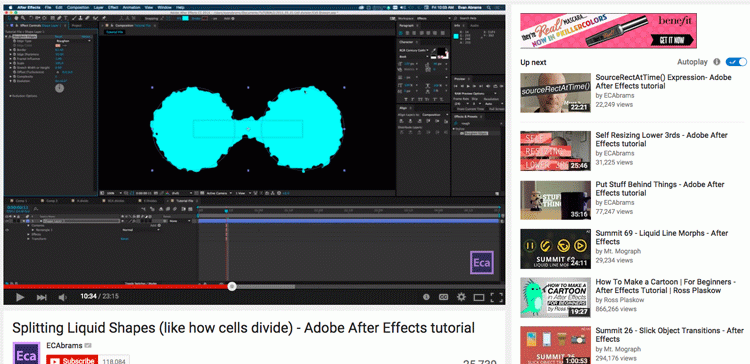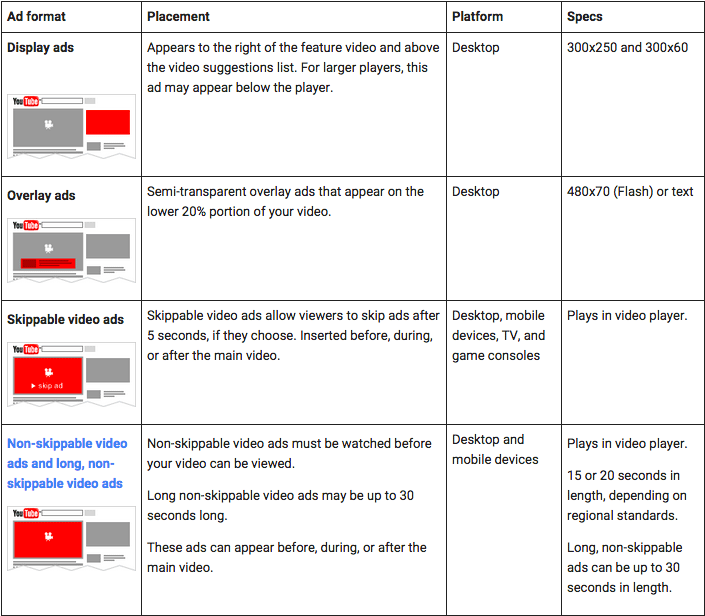How To Build A Brand On Youtube And Make Money

Working with anything visual means it’s important to get your content in front of the right eyes and on the right platforms. Because the internet is so vast, there’s an abundance of choice when it comes to elevating the voice and quality of your brand.
One platform that offers individuals and brands a lot of opportunities is YouTube. But as you’ve probably discovered (if you’re one of the platform’s 1 billion-plus users), it’s not just about uploading a video and calling it a day. YouTube is easy to use on the surface, but if you want to actually gain any momentum from it, there’s a certain level of upkeep and maintenance that needs to pair with your ability to churn out content that people are interested in. So where do you begin?
To get a better understanding of what makes a successful YouTube channel, we turned to a couple of pros — Evan Abrams and the minds behind Corridor Digital. Read their tips below to learn how to build a brand on YouTube and maintain your channel so people keep coming back for more.

Young woman laying down on a deck by the water by GaudiLab
Step 1: Understand the Platform
YouTube serves a very specific set of functions. At first glance it’s a place to host videos, but it’s also a video sharing platform. It lets users interact with one another and with their audiences, but because YouTube is open to everyone, it also means that your content will appear right alongside content from your competitors. From ads on the player to the layout of the page itself, everything on YouTube is designed to show you more than just the video.
“All the content that you see on YouTube will push to other content on YouTube,” said Abrams, a professional creator of After Effects and Motion Graphics tutorials. (With 120,000 subscribers and more than 130 videos, Abrams is an expert on the ins and outs of YouTube.)
“By default, a quarter of the screen is taken up by the real content you want to see,” continued Abrams, explaining how the platform works. “What’s important to YouTube is the ad on the corner, on the video, all the places you can go, and all the people talking about this. The content is second compared to all of those things.”

That’s why it’s important to consider not just the quality of your content, but also how it sits on the page and how it interacts with the viewer. If you prefer to have complete control over the viewer’s experience, YouTube may not be right for you. Your brand should also explore self-hosting options like Brightcove and Wistia, or another social video platform like Vimeo.
You’ll also want to consider the pros and cons of the comments section on YouTube, which can be very daunting for brands. Comments can turn mean very quickly on YouTube, so you need to know ahead of time whether your brand will engage with negative comments (which, Abrams cautioned, can eventually overshadow the actual content) or ignore the comments altogether.
“Engagement is the ability to shape the content and the conversation around it,” said Abrams. “It results in more interest in your content, more views, higher metrics, but you’ll have to remember that sometimes you’ll reach the people you’ll want — and sometimes you won’t.”
The team at Corridor Digital, a video production company helmed by Sam Gorski, Niko Pueringer, and Jake Watson, showcases their visual special effects skills with short movies on YouTube. They take each critique with a grain of salt, learning what their audience does and does not like through the comments section. “Sometimes, people are just negative,” Watson explained. “Other times, a series of comments all pointing out the same thing (good or bad) can be very helpful for improving your skills and getting a sense of what people like to see from you.”
There will always be critics, but as a company venturing into the video production space, it’s important to pay attention and be willing to adjust based on both positive and negative feedback from viewers.
Step 2: Make the Decision
YouTube can help brands relay messages and provide services, but to do so successfully, you have to be aware of who your audience is and whether the experience is right for them. Once you know who your content will serve and why it will help them, it’s easier to assess the value of the platform itself.
“It’s all about crafting your message or video so that it has more potential than just a form of artistic expression,” said Abrams. “Does this have the aerodynamics of something that will go far and go far quickly?” That’s an important question to ask when deciding whether or not your brand is even ready for YouTube. You might find that the content your audience needs just doesn’t have the legs for YouTube.
For Corridor Digital, YouTube offers “regular, free-form creativity without any restrictions.” Watson explained, “On YouTube, no one is going to check your deadlines or make sure you’ve done your homework. It’s up to you on all accounts. That’s one of the most simultaneously challenging and rewarding properties of the platform.” Having too much creative freedom can actually be difficult, and the level of creativity needed will vary from channel to channel.
Both Abrams and Corridor Digital cater to visual and video-centric audiences, which meant the decision to use YouTube was easy. When considering a new YouTube strategy, think about the product you’re trying to sell, your potential audience, and your brand voice — then decide whether it’s worth the time and resource investment that consistent video creation requires.
Step 3: Collaborate
Once you’ve established what you can offer and who you’d like your videos to reach, you’ll need to create some content and start doing the work to establish yourself. One way to promote your YouTube presence is by collaborating with others that cater to similar audiences. “There’s nothing to be lost in a collaboration. If there’s a channel that produces narrative content with a large following, if I’d like to see an overlap between their audience and mine, I want to collaborate with them so that their stuff ends up pushing my stuff. I want them to slingshot me up,” said Abrams.
If you want your videos to reach certain groups of people, be open-minded to the possibility of collaboration with someone who might go after a similar audience. Ideally there will always be some overlap between the content from both collaborators, so that the new audience will enjoy the rest of your brand’s content too. The concept is similar to that of syndication and native advertising — promoting your content and letting it live in multiple places is just as valuable on YouTube.
Step 4: Utilize YouTube Ads
Like we mentioned before, advertisements are very prominent on YouTube, and they influence the way a viewer experiences the content. Advertising on YouTube can be a great way to help bolster your brand’s online image, and there are a few different ways to go about it. First, figure out who you want to target. Analytics can help with this, by letting you know which parameters and keywords to use. Maybe you’ll want to focus on demographics (people in a specific location or a specific age group), or perhaps you’d rather focus on the topics that those people will likely seek out.
Once you’ve set your targeting, you have a few different options for ads — depending on what you want the viewer experience to be like. Video player ads happen at the beginning of the video and can sometimes be skipped after 5 seconds. That means the ad needs to either get the message across within the first 5 seconds, or engage viewers so much that they want to stay for more. Movie trailers are often used effectively as video player ads. Viewers generally know whether they want to continue engaging with the trailer after the first 5 seconds, and if it’s relevant to the content it precedes, it doesn’t feel out of place in the viewing experience.

via YouTube Help >> Advertising Formats
You can also use display ads, which allow you to place content in the right-hand column on video pages (shown below) and at the top of search results. The viewer will see a headline and a thumbnail of the video, so keep that in mind when creating your ad. This forum summarizes the formats and specs, so you can choose which ad type works best for you.

We hope this introductory guide will help to elevate and improve your brand’s online presence. Stay tuned for even more YouTube tips and tricks in the future! And now that you’ve mastered YouTube, consider these video site alternatives as well.
Top image: monjiahmed